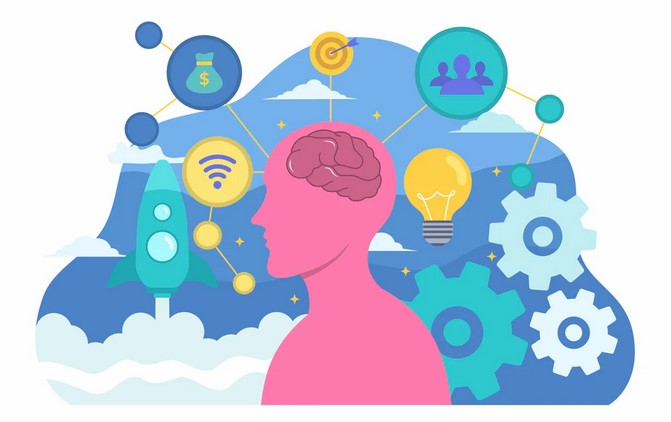
For many couples trying to conceive, boosting fertility naturally is a top priority. Fertility issues are becoming increasingly common, and while medical treatments such as fertility medications or assisted reproductive technologies (ART) are available, many individuals seek natural methods to improve their reproductive health. Natural fertility practices can help optimize the chances of conception and support overall well-being. This article explores key strategies for boosting fertility naturally, from dietary changes to lifestyle adjustments, all aimed at improving reproductive health and increasing the likelihood of conception.
1. Understanding Fertility and Its Key Factors
Before delving into natural fertility methods, it’s important to understand the key factors that influence reproductive health. Fertility is not just about the ability to conceive but also about maintaining overall reproductive health. Several factors play a role in fertility, including hormonal balance, sperm quality, ovulation, and the health of reproductive organs.
1.1. Hormonal Balance
Hormones are crucial in regulating the reproductive cycle. Both men and women have a complex system of hormones that affect everything from egg production to sperm count. Any imbalance in these hormones, such as thyroid disorders, polycystic ovary syndrome (PCOS), or irregular menstrual cycles, can impact fertility.
1.2. Ovulation and Sperm Quality
In women, ovulation is the release of an egg from the ovaries. Ensuring regular ovulation is essential for conception. For men, sperm quality is a key factor in fertility. Sperm count, motility, and morphology (shape) can all affect the chances of successful fertilization.
1.3. Reproductive Health Conditions
Underlying health conditions like endometriosis, fibroids, or pelvic inflammatory disease (PID) can also interfere with fertility. Identifying and managing these conditions can improve the likelihood of conception.
2. Diet and Nutrition: A Key Component of Fertility
One of the most important factors in boosting fertility naturally is proper nutrition. A healthy diet can help regulate hormones, improve ovulation, and support overall reproductive function. Below are key nutrients and dietary habits that can play a significant role in improving fertility.
2.1. Consume Fertility-Boosting Foods
Certain foods are known to support reproductive health by providing essential nutrients and promoting hormonal balance. Incorporating the following into your diet can be beneficial for fertility:
- Leafy Greens and Vegetables: These are rich in folate, a nutrient essential for fertility. Folate helps regulate hormone levels and is important for cell division, which is critical for both egg and sperm health.
- Healthy Fats: Omega-3 fatty acids found in foods like flaxseeds, walnuts, and fatty fish (salmon, mackerel) help balance reproductive hormones. They also reduce inflammation and improve blood flow to reproductive organs.
- Whole Grains and Lean Proteins: Whole grains provide steady energy and are important for regulating blood sugar levels, which affects hormonal balance. Lean proteins such as chicken, turkey, and legumes are great sources of essential amino acids that support tissue repair and cell growth.
- Berries and Antioxidant-Rich Fruits: Berries, such as blueberries, strawberries, and raspberries, contain antioxidants that help combat oxidative stress, which can damage reproductive cells. Antioxidants also support overall health by neutralizing harmful free radicals.
2.2. Avoid Processed Foods and Sugar
Excess sugar and processed foods can negatively affect fertility by contributing to weight gain, insulin resistance, and hormonal imbalances. Women with insulin resistance, for example, often experience difficulty in ovulation. Reducing or eliminating refined sugar and processed foods like fast food, baked goods, and sugary snacks can improve overall health and reproductive function.
Additionally, consuming high levels of trans fats, which are found in some processed foods, has been linked to lower fertility in both men and women. It’s best to limit your intake of foods high in trans fats, such as fried foods, packaged snacks, and margarine.
3. Lifestyle Habits for Supporting Reproductive Health
In addition to diet, several lifestyle habits can support natural fertility. Making healthy choices regarding exercise, stress management, sleep, and avoiding harmful substances can help optimize your reproductive health.
3.1. Maintain a Healthy Weight
Being overweight or underweight can both affect fertility. For women, excess body fat can lead to hormonal imbalances, affecting ovulation and the ability to conceive. On the other hand, being underweight can disrupt hormone production and lead to irregular periods. Maintaining a healthy weight through a balanced diet and regular exercise can improve fertility by supporting hormonal balance and promoting regular ovulation.
3.2. Regular Exercise
Exercise is essential for overall health, but when it comes to fertility, moderation is key. Excessive exercise, especially high-intensity workouts, can negatively affect fertility by disrupting hormone levels. On the other hand, moderate exercise—such as walking, swimming, or yoga—can improve blood circulation, reduce stress, and help maintain a healthy weight, all of which support fertility.
Exercise also helps regulate insulin levels and maintain blood flow to the reproductive organs, improving egg and sperm health. Aim for 30 minutes of moderate exercise most days of the week to support reproductive health.
3.3. Manage Stress Effectively
Chronic stress is a significant factor that can interfere with fertility. When you’re stressed, your body produces cortisol, a hormone that can disrupt the balance of other reproductive hormones like estrogen and progesterone. Over time, this can lead to irregular ovulation and decreased fertility.
To manage stress, consider relaxation techniques such as meditation, deep breathing exercises, yoga, or mindfulness practices. Engaging in activities that promote mental and emotional well-being can help reduce stress levels and improve fertility outcomes.
3.4. Sleep Quality and Duration
Good-quality sleep is essential for reproductive health. During sleep, your body produces various hormones, including those that regulate ovulation and sperm production. Poor sleep or irregular sleep patterns can interfere with these hormonal cycles and negatively impact fertility.
Aim for 7-9 hours of uninterrupted sleep each night. Create a relaxing bedtime routine, avoid caffeine late in the day, and limit screen time to improve the quality of your sleep.
3.5. Avoid Toxins and Harmful Substances
Exposure to environmental toxins and chemicals, such as pesticides, heavy metals, and endocrine-disrupting chemicals (found in plastics, cosmetics, and household cleaning products), can negatively affect fertility. These substances can interfere with hormone production and function, lowering the chances of conception.
Minimize exposure to harmful chemicals by choosing organic produce, using natural cleaning products, and avoiding plastic containers that contain BPA. Reducing your exposure to these toxins can support your efforts in boosting fertility naturally.
Conclusion
Boosting fertility naturally involves a holistic approach that includes adopting a nutritious diet, maintaining a healthy weight, managing stress, and making conscious lifestyle choices. By focusing on these factors, you can improve your reproductive health and increase the chances of conception. It’s essential to remember that fertility is a complex process, and what works for one person may not work for another. However, making these positive changes can help optimize your health, giving you the best possible chance of successful conception. By integrating these strategies, you are not only boosting fertility naturally but also improving your overall well-being. With patience, consistency, and a holistic approach, you can create the ideal environment for reproductive health.








